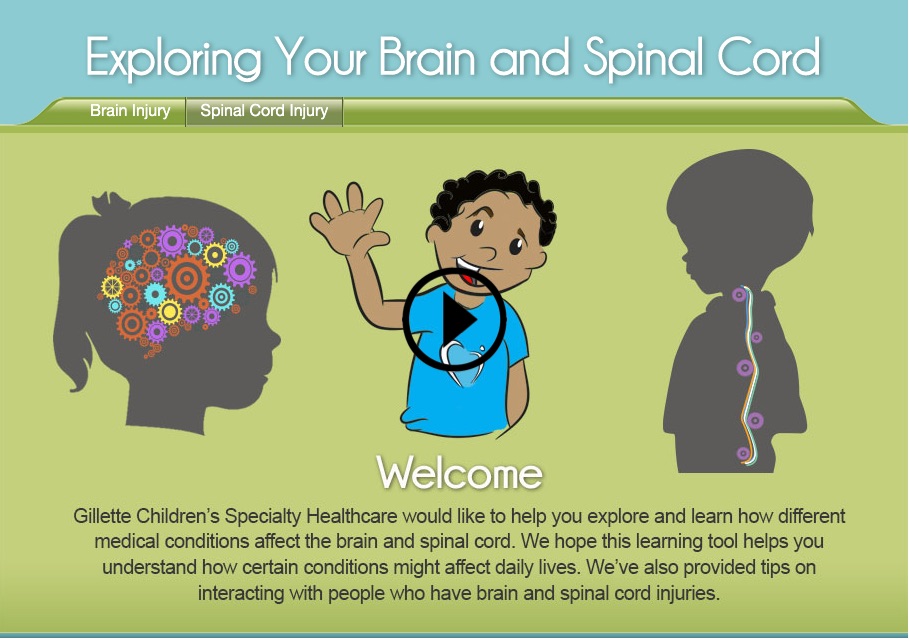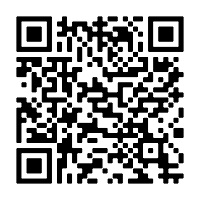What is a brain injury?
An acquired brain injury occurs after birth—meaning it’s not hereditary, congenital or related to birth trauma. An acquired brain injury can be classified as mild (concussion), moderate or severe. This page will focus primarily on moderate to severe injury.
A traumatic brain injury, or TBI, is caused by an external factor such as a bump, blow or jolt to the head, or a Penetrating injury (such as from a gunshot) to the head that disrupts the normal function of the brain. The severity of a TBI may range from mild (for example, concussion) to severe.
For children and teens the most common causes of traumatic brain injury are:
- Motor vehicle accidents
- Bicycle accidents
- Falls
- Abuse/Assaults
- Sports accidents
Nontraumatic brain injuries happen when something inside the brain alters the health or normal functioning of the brain. Nontraumatic brain injuries can be caused by illnesses such as encephalitis and meningitis or can be related to a stroke or tumor.
Many factors can lead to nontraumatic brain injury including:
- Brain tumors
- Strokes
- Encephalopathy, which is injury to the brain caused by disruption of other body functions such as from dehydration, liver or pancreatic illness, or environmental toxins
- Infections such as encephalitis or meningitis that cause inflammation in the brain
An hypoxic or anoxic brain injury occurs when there is lack of oxygen to the brain causing the brain cells to die. An hypoxic brain injury results from a partial lack of oxygen whereas an anoxic brain injury results from a total lack of oxygen.
Children might experience a lack of oxygen due to:
- Drowning
- Choking
- Cardiac arrest
- Head trauma
Click through the module below to learn more about the different symptoms associated with spinal cord injuries and brain injuries. At Gillette, we address these symptoms with specific physical therapy, occupational therapy and speech-language therapy techniques.
Welcome. Gillette Children's Specialty Healthcare would like to help you explore and learn how different medical conditions affect the brain and spinal cord. We hope this learning tool helps you understand how certain conditions might affect daily lives. We've also provided tips on interacting with people who have brain and spinal cord injuries.
What is the brain? Your brain controls how your body works, just as a command station controls a spaceship. Your brain tells your lungs when to inhale, your heart when to pump blood, and your muscles how to move. Your brain also lets you know if something feels hot or cold, whether you should laugh or cry, what you should talk about, and much more.
Danger! Imagine that a meteorite hits your spaceship's command station. It might not be able to control what the spaceship does—or it might send wrong directions to the spaceship. The same thing happens when something hurts the brain. It might send out wrong signals to the body—or no signals at all. When people have a brain injury, they might have trouble doing things they used to do.
A different kind of injury. A brain injury is different from other injuries, such as a broken bone. When people have brain injuries, they might: look the same, but act differently; speak differently, walk slowly or use a wheelchair; be sleepy; do or say strange things; get angry easily; eat in a different way; need extra help in school.
A long time to heal. Brain injuries might take months or even years to heal. People who have brain injuries might have problems for the rest of their lives. But they can feel better and learn to do things in different ways. Because brain injuries can cause changes, people who have brain injuries might feel angry, upset or even yell at others. Sometimes brain injuries can affect the person's ability to control their own feelings and behavior. Brain injuries can also make it harder for them to recognize your feelings.
What about me? When someone you know has a brain injury, remember that the brain injury might cause changes in the person. It isn't anything you did. You can still love and care about that person. Still, those changes can make you feel confused, frustrated, angry or sad. It's normal to feel that way. Talk to your parents, relatives, teachers or counselors about how you feel. They can help you understand why you feel the way you do—and figure out ways to help you feel better.
How should I act? If you know someone who has a brain injury, it's OK to ask how the brain injury happened, how the person feels or how you can help. Try to understand the person's feelings and changes in personality or abilities. You should: talk to people the same way you did before they had a brain injury; involve them in any age-appropriate activities they can still take part in, such as meals or playtime; stand up for them if they are teased. You shouldn't: laugh at or make fun of a person who has a brain injury; touch a person who has a brain injury without asking first; push a person using a wheelchair without asking first.
These are the different parts of the brain: frontal lobe, parietal lobe, occipital lobe, cerebellum, brain steam, temporal lobe. Click Next to learn about different types of brain injuries using our interactive brain.
People who have a frontal lobe injury might have a hard time: talking; paying attention in school; knowing when to laugh or cry; knowing what to do if they get lost; deciding what to have for lunch; staying organized.
People who have a parietal lobe injury might have a hard time: knowing if something is hot, cold, dull or sharp; playing games or doing puzzles; moving around without running into things; doing homework.
People who have an occipital lobe injury might have a hard time: seeing things around them; recognizing people; understanding numbers or letters; reading.
People who have a temporal lobe injury might have a hard time: remembering names; recalling what they did yesterday; understanding what people are saying to them; enjoying music; doing things in the right order—such as tying their shoes.
People who have a cerebellum injury might have a hard time: walking—they might need to use a wheelchair; using their hands and arms—they might not be able to throw a ball or pick up a toy; balancing—they might be very wobbly.
People who have a brain stem injury might have a hard time: breathing on their own—they might need help from a machine called a ventilator; sleeping at night or staying awake during the day; keeping cool or staying warm.
Anoxic or hypoxic brain injuries. These injuries happen when the brain receives no oxygen or receives too little oxygen. Anoxic and hypoxic injuries cause different problems in several areas of the brain. People who have an anoxic or hypoxic brain injury might have a hard time: paying attention; recognizing people; showing emotional responses, such as smiling; moving, walking, talking, eating or breathing.
Life can change after a brain injury, but people who have brain injuries can still lead full lives. For more information and resources about brain injuries, explore www.gillettechildrens.org or visit Health Resources and Education at Gillette.
 Home Page
Home Page



